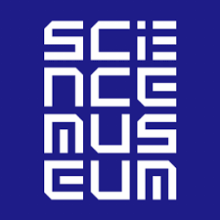Science Museum Group

Huddle has revolutionised the way SMG shares information.
SMG consists of the Science Museum, Museum of Science and Industry, National Railway Museum (York), National Media Museum and National Railway Museum (Shildon).
The Science Museum Group’s (SMG) collections form an enduring record of scientific, technological and medical change from the past. Providing an immersive experience where visitors can make sense of the science that shapes our lives, the Group wants people to feel they have arrived at the home of ingenuity – a place to be inspired by world-class objects, exhibitions and stories of technological achievement illustrated through the look and feel of our galleries and displays. SMG aims to engage people of all generations and backgrounds in science, engineering, medicine, technology, design and enterprise.
“Huddle starts where SharePoint stops, offering features like secure mobile and cross-firewall collaboration. Our strategy is that Huddle will be used for all external collaboration and dynamic data, while SharePoint is used as an intranet and archive platform.”
To streamline and accelerate the sharing of content between museum staff and external partners, such as other museums and exhibition design firms.
Walk through the doors of the Science Museum in London and you’ll be faced with artefacts that have changed the way we communicate and collaborate: Stephenson’s original Rocket locomotive, for example, as well as Babbage’s Difference Engine and the 1956 Ferranti Pegasus – the world’s oldest working computer.
If Julian Payne has his way, Huddle might one day find its way into one of the galleries. The parallel may be extreme, but there’s no doubt that the cloud-based collaboration platform is rapidly transforming the way SMG works on content.
“Huddle is revolutionising the way SMG shares information – both inside the museum and with external partners,” explains Payne, the SMG’s head of ICT. “It’s secure, easy to use, supports mobile collaboration and – being cloud-based – Huddle requires minimal IT intervention. What more could we ask for?”
The catalyst for introducing Huddle was the merging of SMG with the Museum of Science and Industry in Manchester. During the program, a multitude of documents needed to be shared between the museums, reviewed, edited and approved. This included project files, design documents and video content. Previously, SMG would have relied on email, which is not an efficient collaboration tool.
“We traditionally relied on email to share content, but the large attachments were always a problem and there was minimal version control,” says Payne. “We tried cloud storage solutions like DropBox too, but there were concerns about the security of these platforms.”